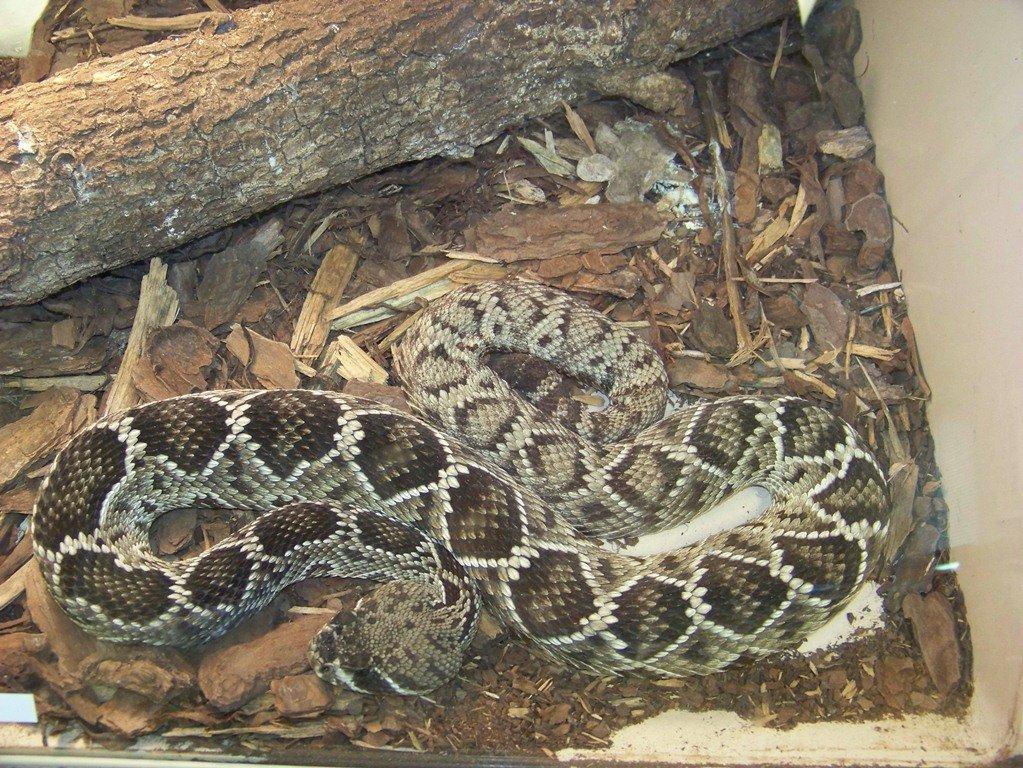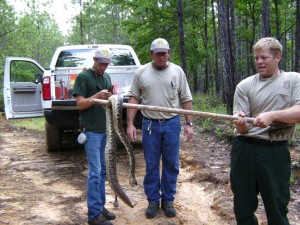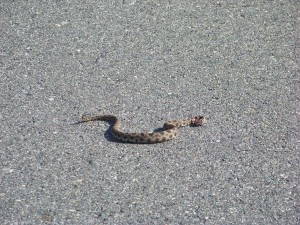
The Southeast Partners in Amphibian and Reptile Conservation has dubbed 2013 as the “Year of the Snake”. There are many animals that strike fear in humans but little cause more than snakes. Interestingly kids seem to like them. It is when we become an adult that we do not. Why is that?
Snakes are very cryptic and stealthy hunters preferring the mode of hide-ambush. We encounter them along a trail only to be surprised and the “surprise” scares us to death! Many people do not like surprises and never want to experience that feeling again; so snakes become enemies.
The ole saying “the only good snake is a dead snake” is very true to many people. Many of us have encountered snakes and a few may have been bitten. Studies suggest that 95% of humans bitten by snakes are either trying to catch it, or kill it. So the lesson is clear… if you do not want to get bit, leave it alone.
Snakes in fact do very good things for us. They are one of the best “rodenticides” you will find. It is actually better to find a snake in your barn than a rat. Like spiders and bats, which consume thousands of unwanted insects, snakes should be appreciated for what they do for us and left to do it.


Ray Ashton lists 66 species and subspecies of snakes in the state of Florida. Only 6 of these are venomous. 60 (91%) of Florida snakes belong to the Family Colubridae. All colubrid snakes in Florida are non-venomous. They can be distinguished from the others by their round pupils, narrow heads, and solid (non-hollow) teeth. There are five species of Florida snakes in the Family Viperidae. The “pit-vipers” have hollow hinged fangs through which they can inject venom. They possess elliptical pupils and have a “pit” between the eye and nostril that can detect infra-red heat. One species, the coral snake, is found in the Family Elapidae. Elapids are some of the most venomous snakes in the world and include such animals as the cobras and sea snakes. They differ from pit-vipers in that they have round pupils and small heads (not “diamond” shaped) and differ from colubrids in that they have straight hollow fangs for injecting venom.
Snakes do not chase people down; they are actually afraid of us and only bite in defense. All snakes warn before they bite. Some snakes will musk hoping you smell it and move away. Most snakes will shake their tails; often against dead leaves to make a rattling sound. Many will make themselves look larger by opening their mouth wide or by flattening out their head and/or body. They do not want to bite; they bite as a last resort.

To celebrate “THE YEAR OF THE SNAKE” we will be posting articles on different snakes found in Northwest Florida each month over the course of 2013. If you are interested in more information, contact Rick O’Connor at roc1@ufl.edu or call 850-475-5230. This month’s Snake Pictures are rattlesnakes!
References:

 0
0
